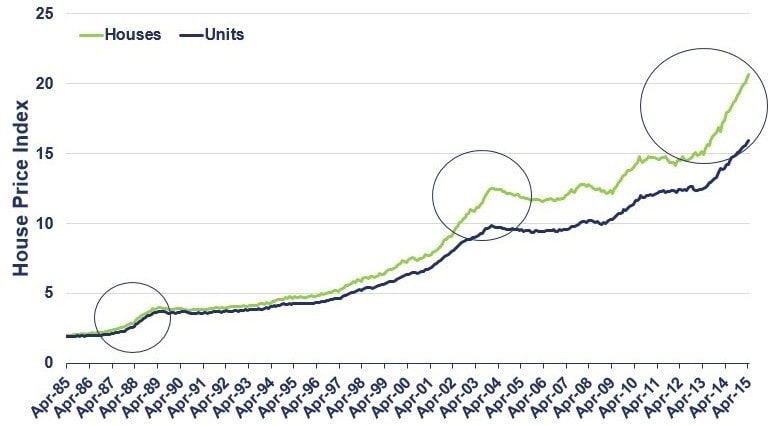Does the Sydney housing bubble exist? Onthehouse's Eliza Owen
Does the Sydney property bubble exist?
This could really be a yes or no answer. A bubble depends on so many factors, and we don’t really know what defines a bubble. However, what we DO know can be seen in the current housing market.
Why I think ‘yes – we are in a bubble situation’:
1. Bubbles are characterised by low interest rates
Interest rates in Australia are currently low, and the official cash rate is at a historically low 2%. The Australian Prudential Regulation Authority (APRA) has had a slow, weak response to banks’ lending to investors. Rather than the loan-to-value ratio cap employed in New Zealand, the APRA has been encouraging ‘stress tests’. Under this policy, banks have the responsibility of making sure borrowers can cope with mortgage repayments for interest rates of up to 7%.
2. Bubbles are characterised by 'speculative investment'.
Speculative investment is when you invest in something because you think it is going to deliver a high return quickly. The NAB Quarterly Australian Residential Property Survey for the first quarter of 2015 revealed that investors are making up a larger portion of those taking out home loans to purchase houses. Investors are further incentivised to purchase properties through negative gearing and capital gains concessions.
In documents released by the RBA under the freedom of information act, the amount of investors receiving home loans was growing by an annual rate of over 10% in 2014. The ideal growth rate in investor home loans was specified at around 6%.
3. Bubbles are characterised by rapid growth.
The median house in Sydney has increased in value by approximately $160,000 in the year to May 2015.
At the same time, I could also answer ‘no – we are not in a bubble situation’, because:
1. I'm afraid of commitment
2. Evidence from the past.
The Sydney market has never really ‘popped’. We can see this by looking at the ‘House Price Index’ (HPI) for the median house in Sydney:
- The HPI is a number that represents how much house prices have increased at any point in time since our first point of data collection in January 1979.At April 2015, the HPI for the median house in Sydney was 20.70. This means that the median house value in Sydney has increased by 20.70 times the house value in 1979.
- The circles in Graph 2 highlights the big housing booms throughout the last 30 years (1987-88, 2003-04 and 2013-14). The slope of the HPI represents the rate of growth in this indicator. This data shows that Sydney houses are currently in their largest, longest housing boom. But you can also see that the HPI rarely goes down, and when it does go down it doesn’t stay down for very long.
- For example, in 2003, Sydney houses experienced a peak growth rate of 24%.
- The correction that followed between 2004 and 2007 saw a contraction of just 3%. A mere 3% contraction of what houses were worth at the end of a housing boom does not seem like a drastic correction, although this contraction continued for several quarters. Such growth patterns prompt me to view the Sydney market as an anomaly that could well stabilise at high prices.
Click to enlarge - Sydney HPI

The bubble could pop if the institutional conditions that affect demand are changed. These could include a crack-down on foreign investment, reform to negative gearing and capital gains, an increase in interest rates and/or a serious reform to lending rules for banks.
It could also pop if people decide the money they are paying is not worth the quality of life they are getting. Sydney is becoming very dense, some of our transport options are at capacity, and what expansion is happening out west is further and further from employment opportunities and entertainment.
Eliza Owen is the market analyst for onthehouse.com.au. She can be contacted here.
